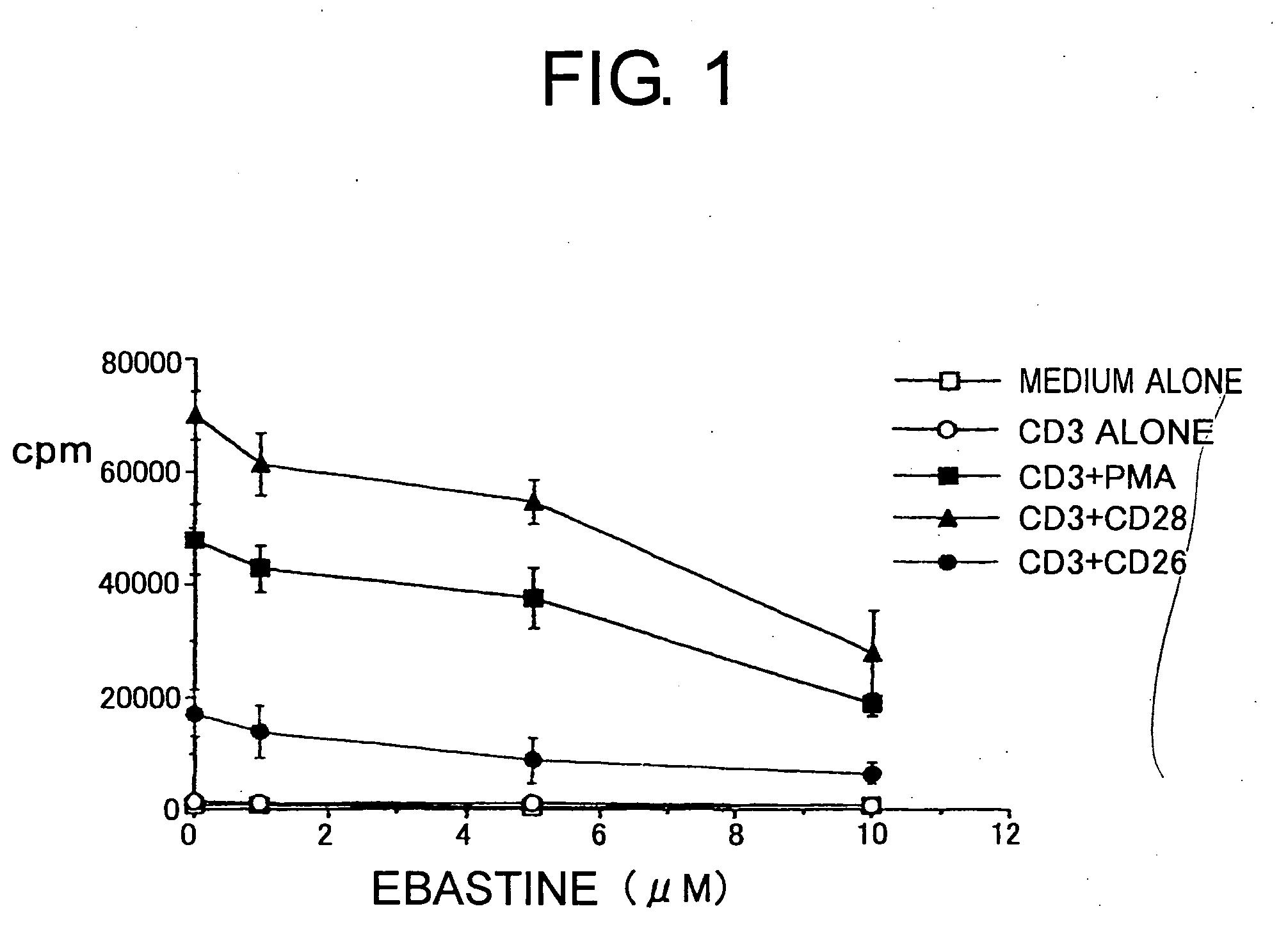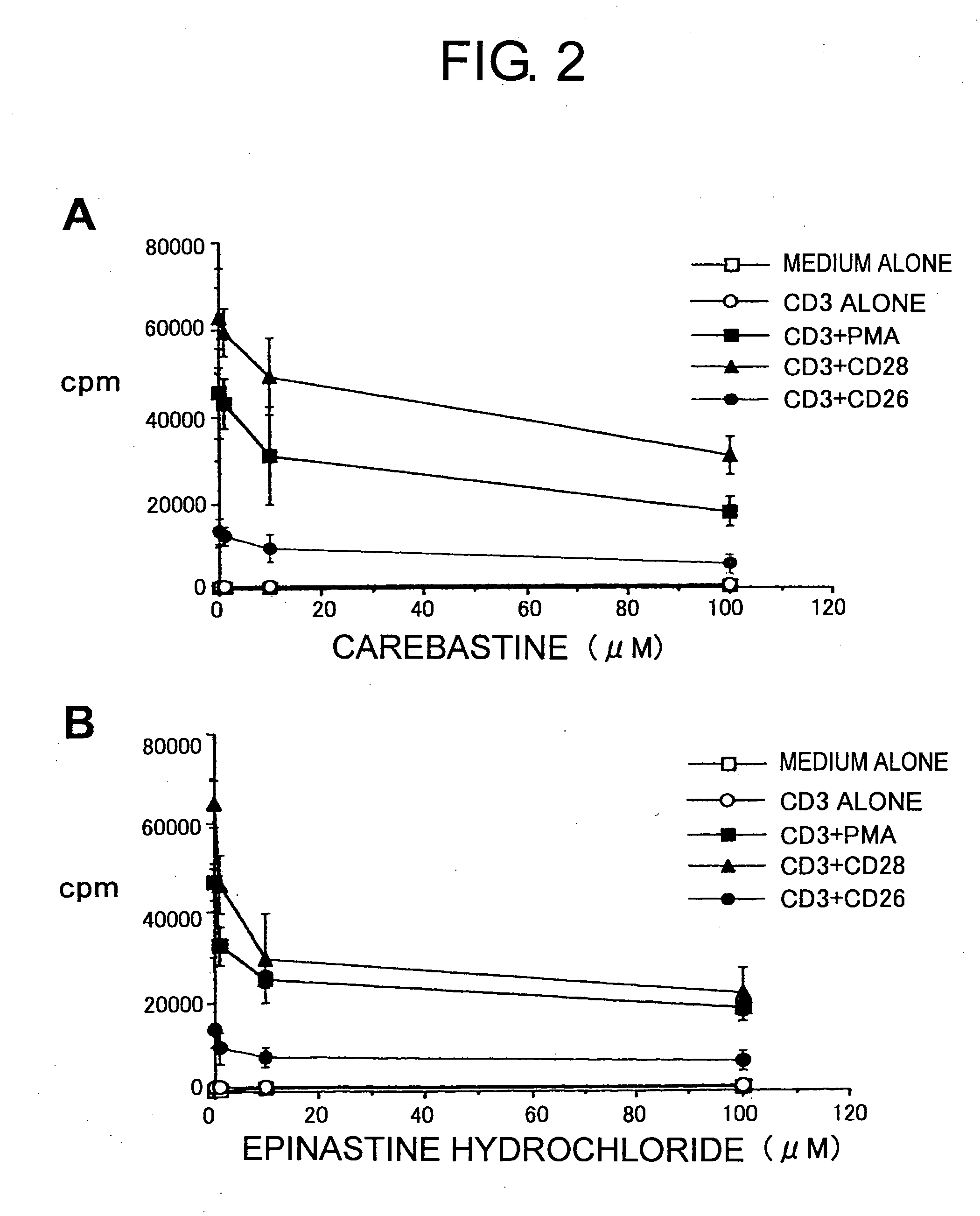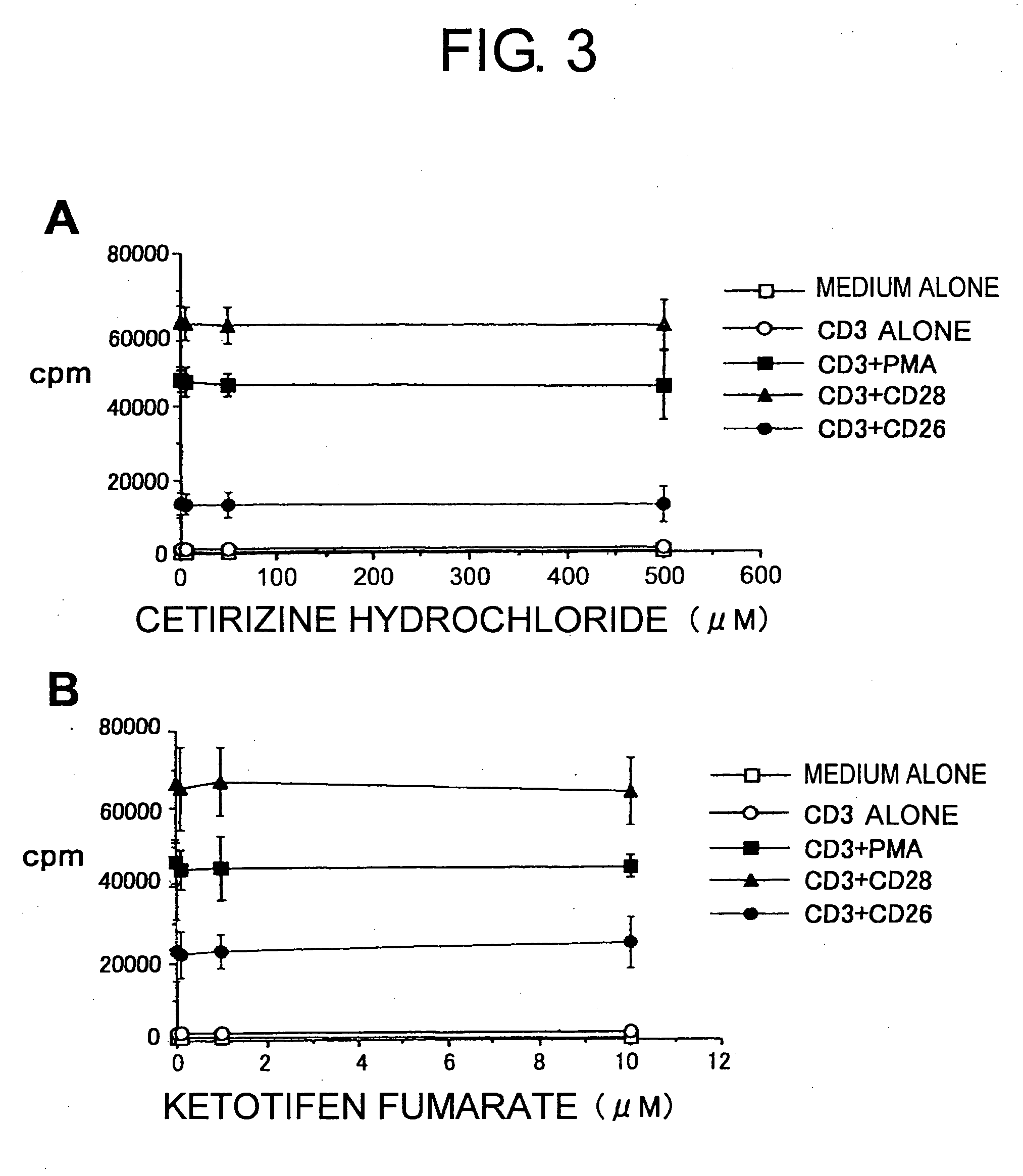Compounds capable of inhibiting immunocyte-related allergic immune reactions
a technology of immunocyte-related allergic reactions and compounds, which is applied in the field of compound capable of inhibiting immunocyte-related allergic immune reactions, can solve the problems of side effects, allergy symptoms, and such that the activity of th2 type cytokine production suppressing activity has not been studied, and the field of ebastine, carebastine, and epinastine hydrochloride is not yet known
- Summary
- Abstract
- Description
- Claims
- Application Information
AI Technical Summary
Benefits of technology
Problems solved by technology
Method used
Image
Examples
example 1
Effects of H1 Blockers on T Cell Proliferation Via Different Activation Pathways
[0097] All H1 blockers used for this comparative study belong to the long-acting second-generation H1 blockers recently used in Japanese clinical practice. Specifically, these included ebastine (trade name Ebastel), its active metabolite carebastine, epinastine hydrochloride (Alesion), and cetirizine hydrochloride (Zyrtec), all confirmed to be effective as a single dose per day to improve compliance by patients. As a control, ketotifen fumarate (Zaditen) which is said to have a high selectivity and affinity to H1 receptors among conventional H1 blockers was added, and in total, five types of H1 blockers were examined.
[0098] The maximum blood concentration of ebastine is 0.03 μM, and that of carebastine, the active metabolite of ebastine, is 0.1 μM. Epinastine hydrochloride, cetirizine hydrochloride, and ketotifen fumarate act as the same structure even after absorption via the intestinal tract, and the...
example 2
Effects of H1 Blockers on Th1 Type Cytokine Production
[0104] In order to analyze whether or not H1 blockers have an inhibitory effect on cytokine production induced by the various costimulations described above, the present inventors measured Th1 type cytokines (IL-2, and IFN-γ) in the culture supernatant induced by the various costimulations described above.
[0105] The antibody-coated plates and T cells were prepared similarly as in Example 1 except that the OKT3 concentration was 0.5 μg / ml. The cytokine production by T cells was analyzed in triplicate using 96-well flat-bottomed plates by the same method employed in the T cell proliferation analysis described above. After culturing for 24 hours, the culture supernatant was tested using ELISA kit (IL-2: Biosource International, Camarillo, Calif.; IFN-γ: R&D systems, Minneapolis, Minn.) to quantify IL-2 and IFN-γ.
[0106] As shown in FIGS. 4A and 5A, ebastine and carebastine did not inhibit IL-2 production under any of the costimula...
example 3
Effects of H1 Blockers on Th2 Type Cytokine Production
[0107] Th2 type CD4 T cells play an important role in allergic diseases. Therefore, the present inventors analyzed the effects of ebastine on Th2 type cytokines (IL-4, and IL-5) induced by the various costimulations described above. This analysis was performed similarly as in Example 2 except that ELISA (IL-4: Biosource International, Camarillo, Calif.; IL-5: R&D systems, Minneapolis, Minn.) was used to quantify IL-4 and IL-5.
[0108] As shown in FIGS. 9A, 10A, and 11A, ebastine, carebastine, and epinastine hydrochloride inhibited IL-4 production under each costimulation condition in a concentration-dependent manner. In particular, ebastine nearly completely inhibited IL-4 production from T cells at 10 μM. Furthermore, as shown in FIGS. 9B, 10B, and 11B, ebastine, carebastine, and epinastine hydrochloride inhibited IL-5 production in a concentration-dependent manner under each of the costimulation conditions. In comparison to the...
PUM
| Property | Measurement | Unit |
|---|---|---|
| radioactivity | aaaaa | aaaaa |
| concentration | aaaaa | aaaaa |
| pore size | aaaaa | aaaaa |
Abstract
Description
Claims
Application Information
 Login to View More
Login to View More - R&D
- Intellectual Property
- Life Sciences
- Materials
- Tech Scout
- Unparalleled Data Quality
- Higher Quality Content
- 60% Fewer Hallucinations
Browse by: Latest US Patents, China's latest patents, Technical Efficacy Thesaurus, Application Domain, Technology Topic, Popular Technical Reports.
© 2025 PatSnap. All rights reserved.Legal|Privacy policy|Modern Slavery Act Transparency Statement|Sitemap|About US| Contact US: help@patsnap.com



